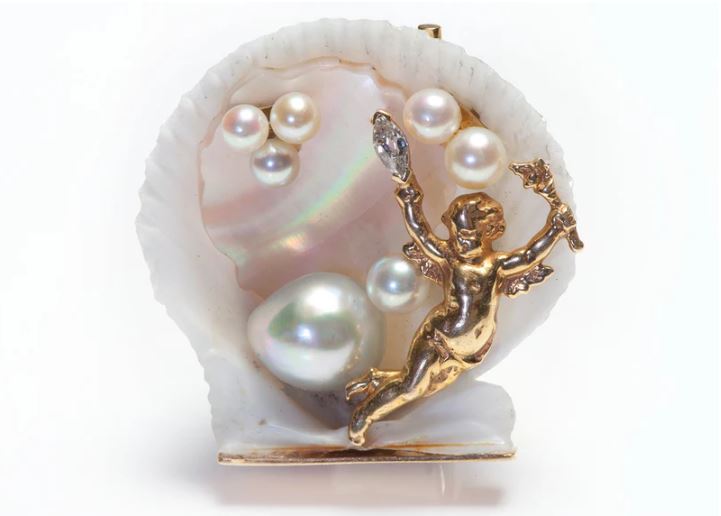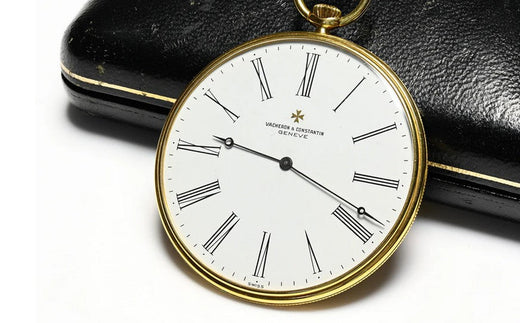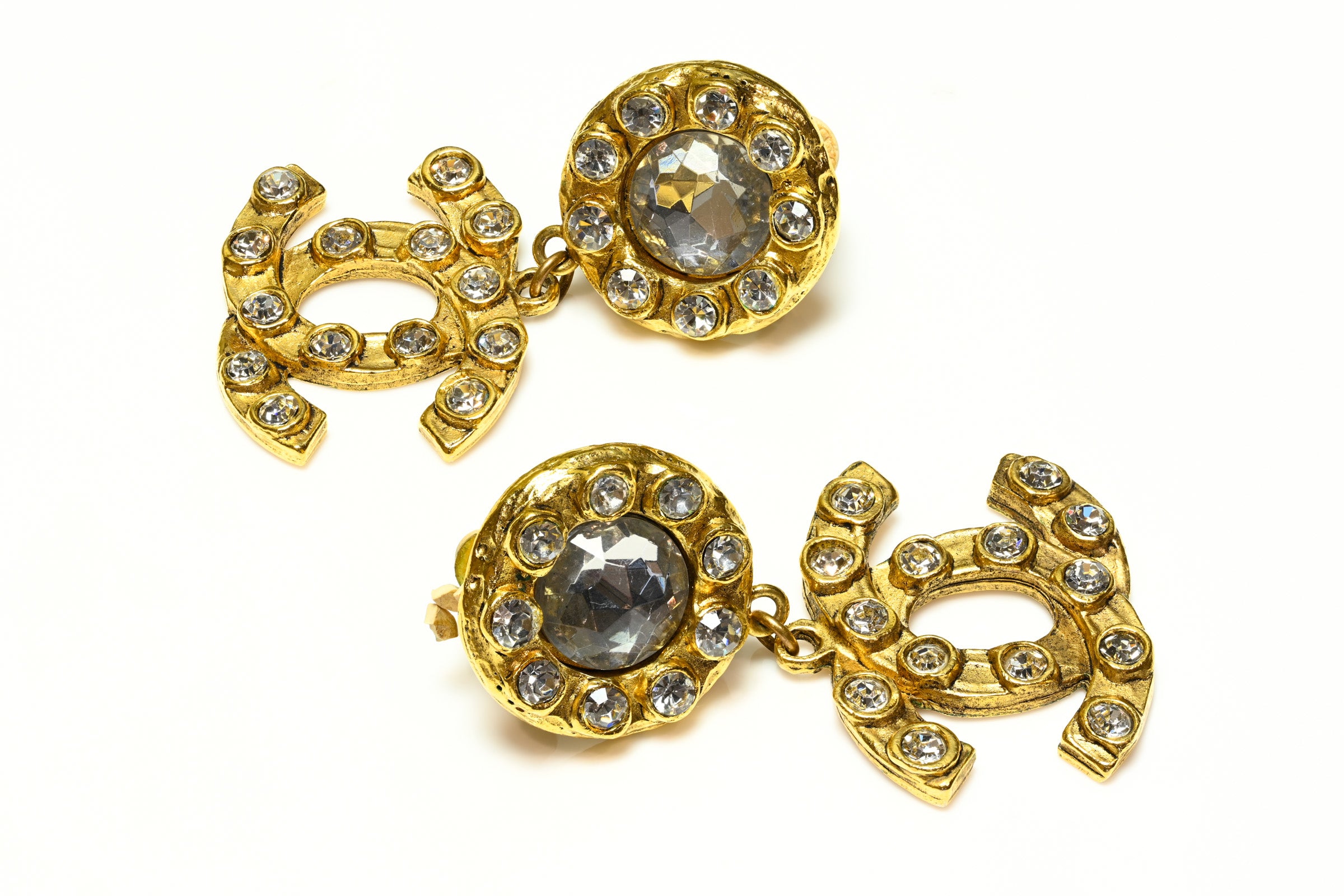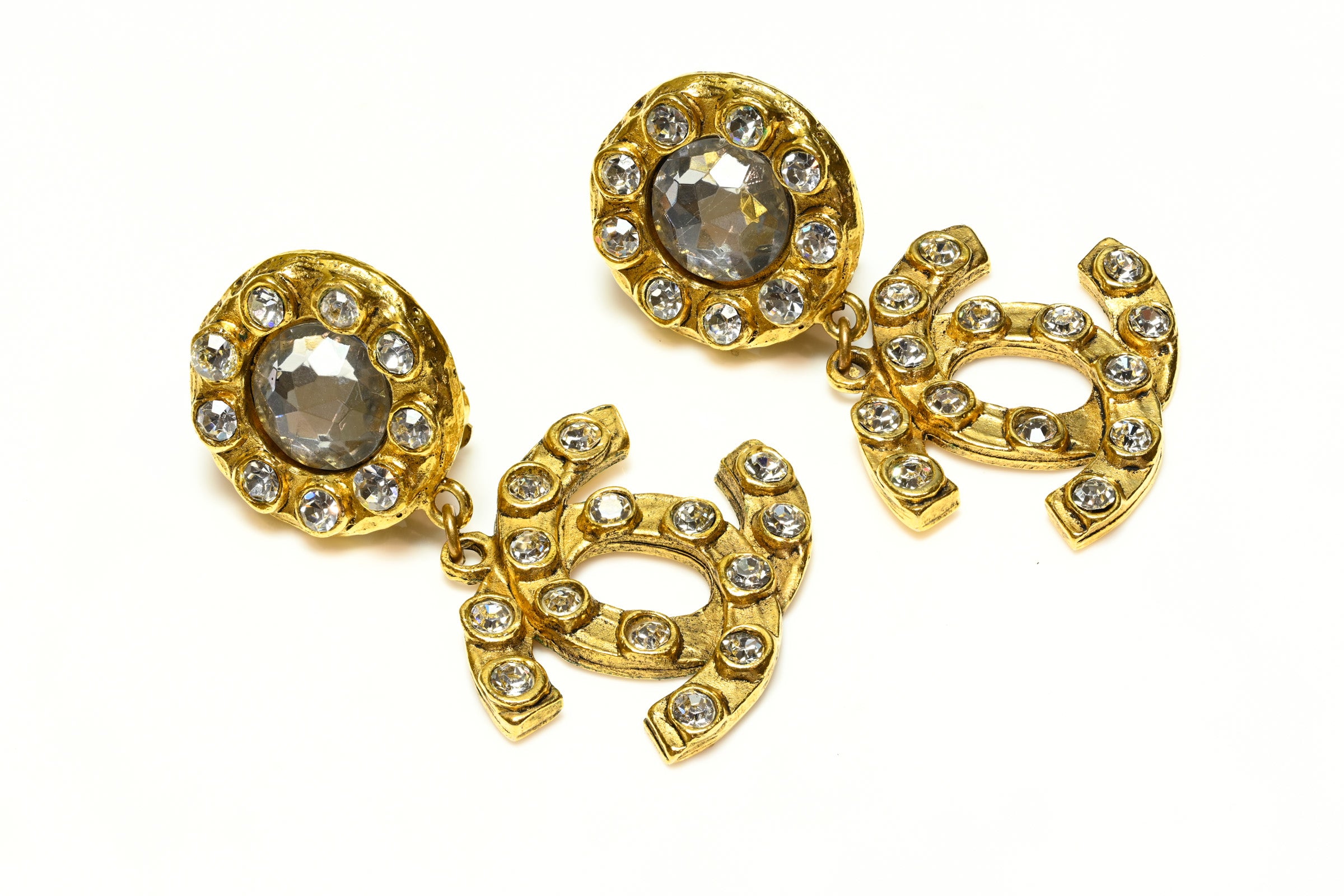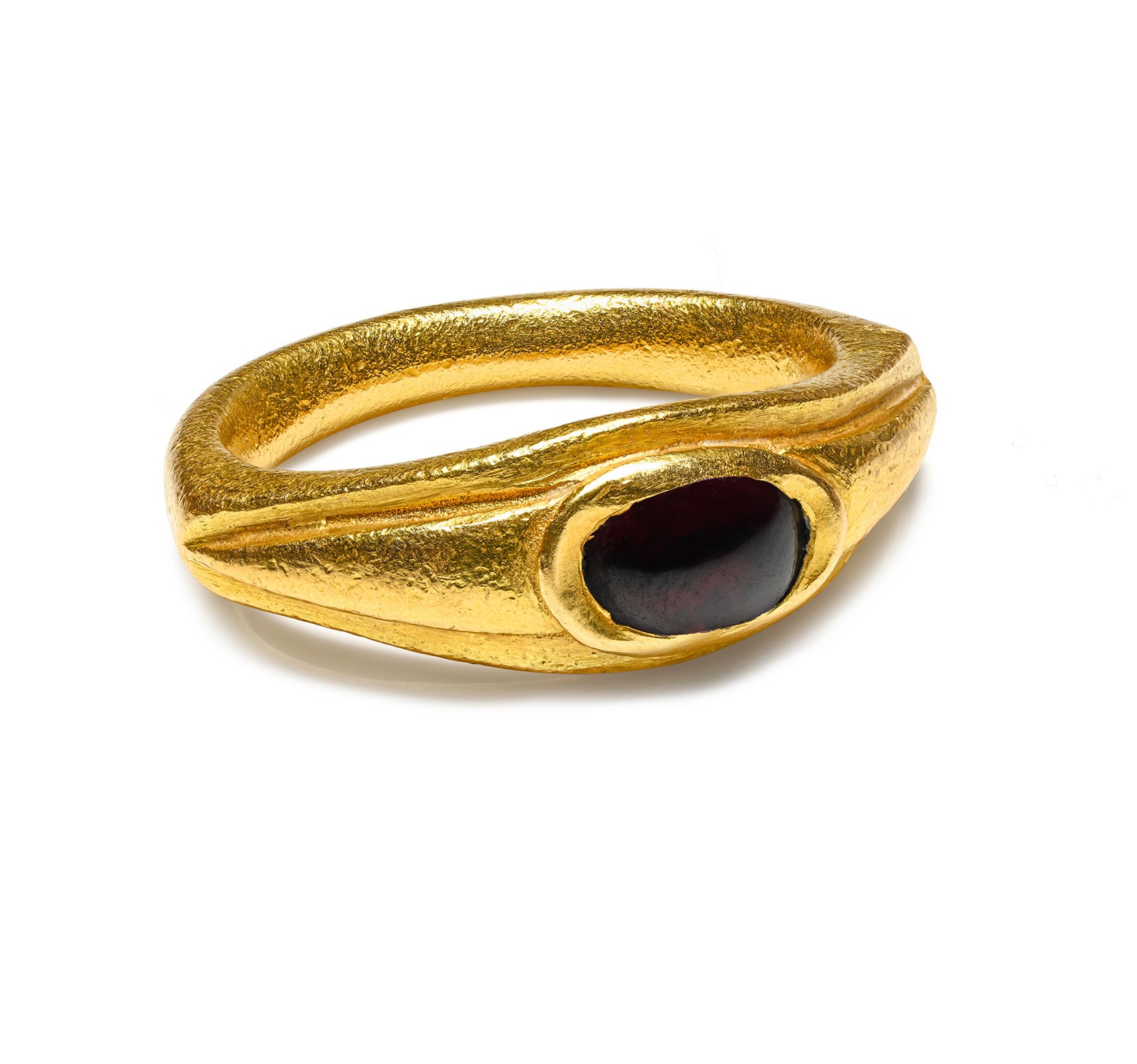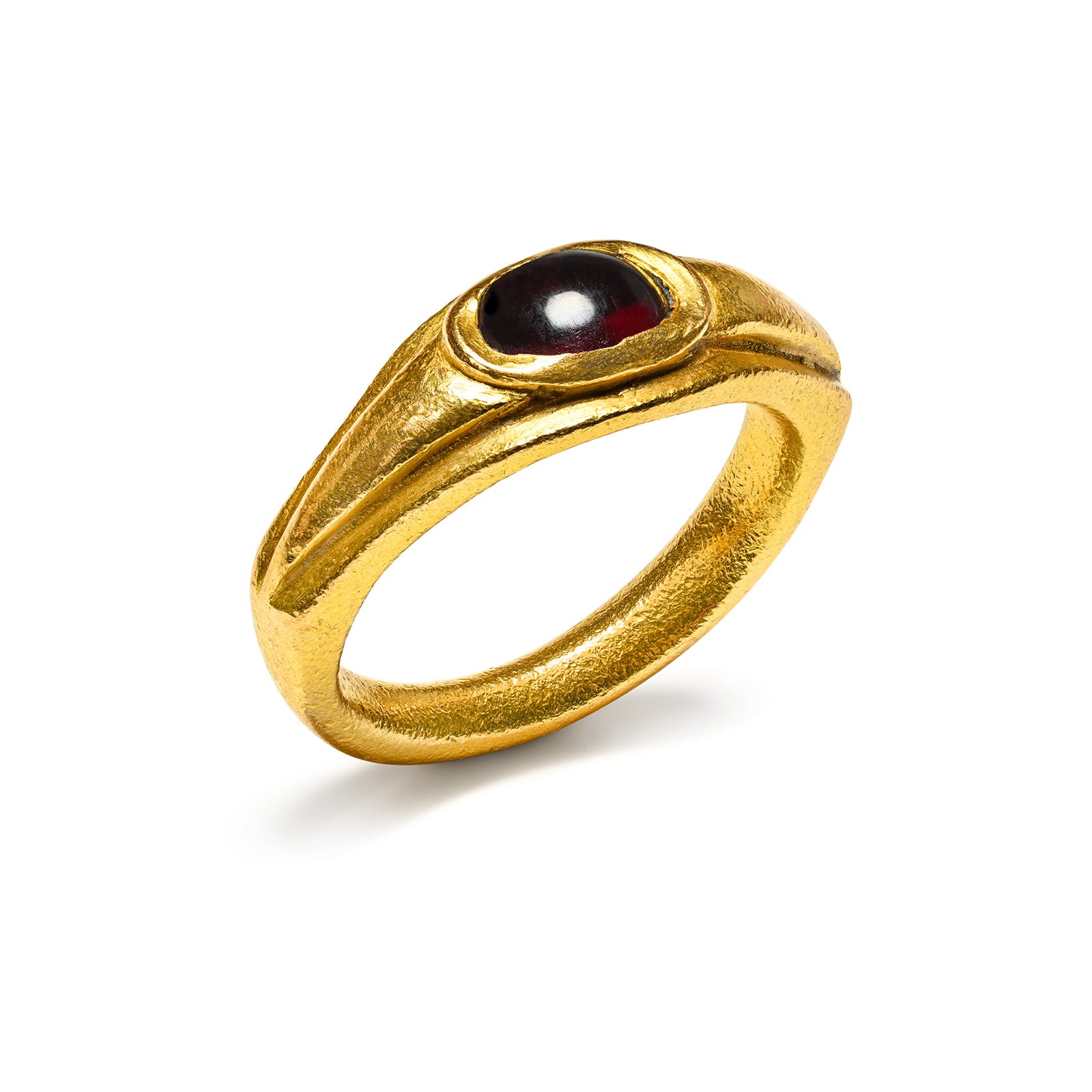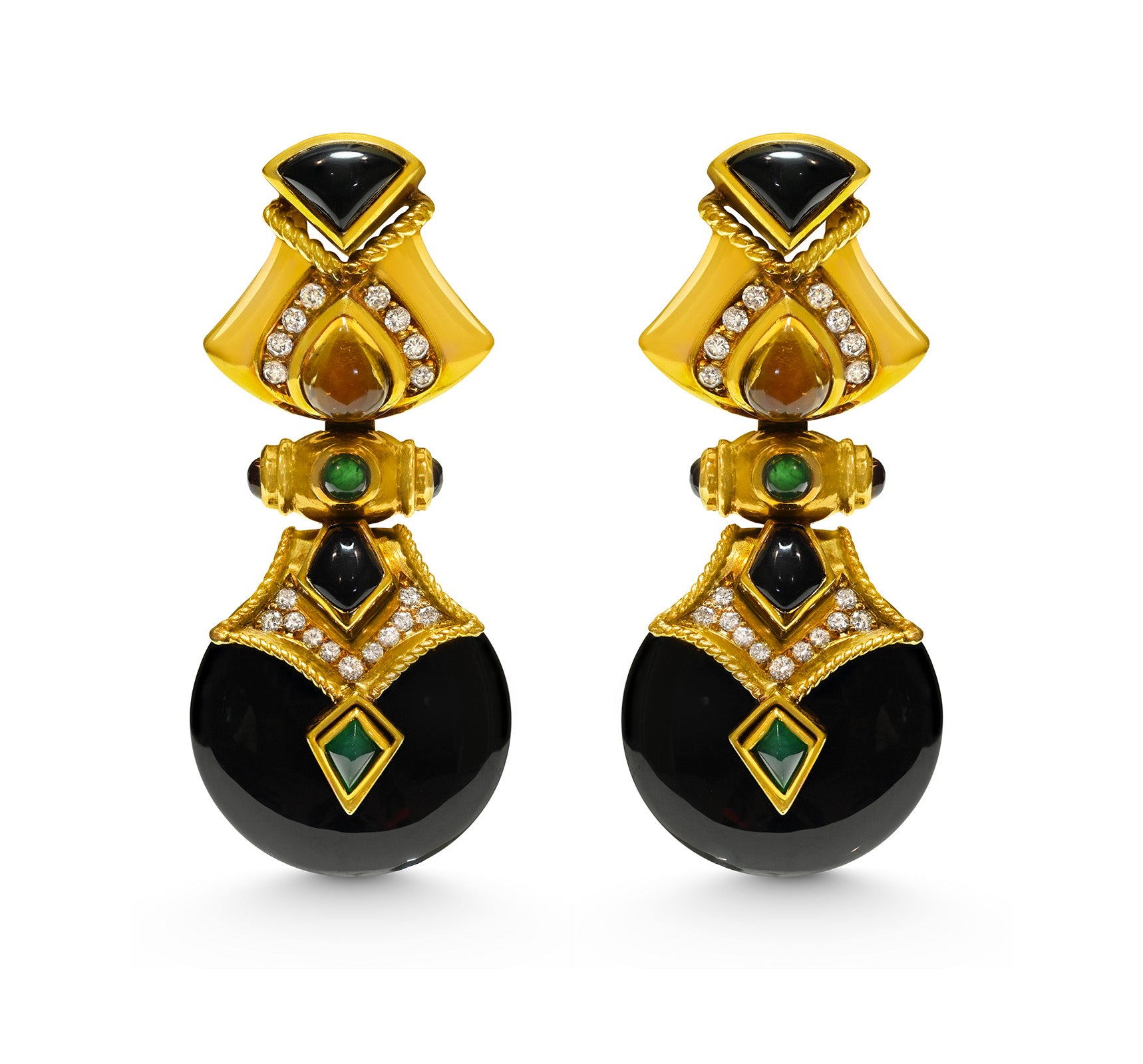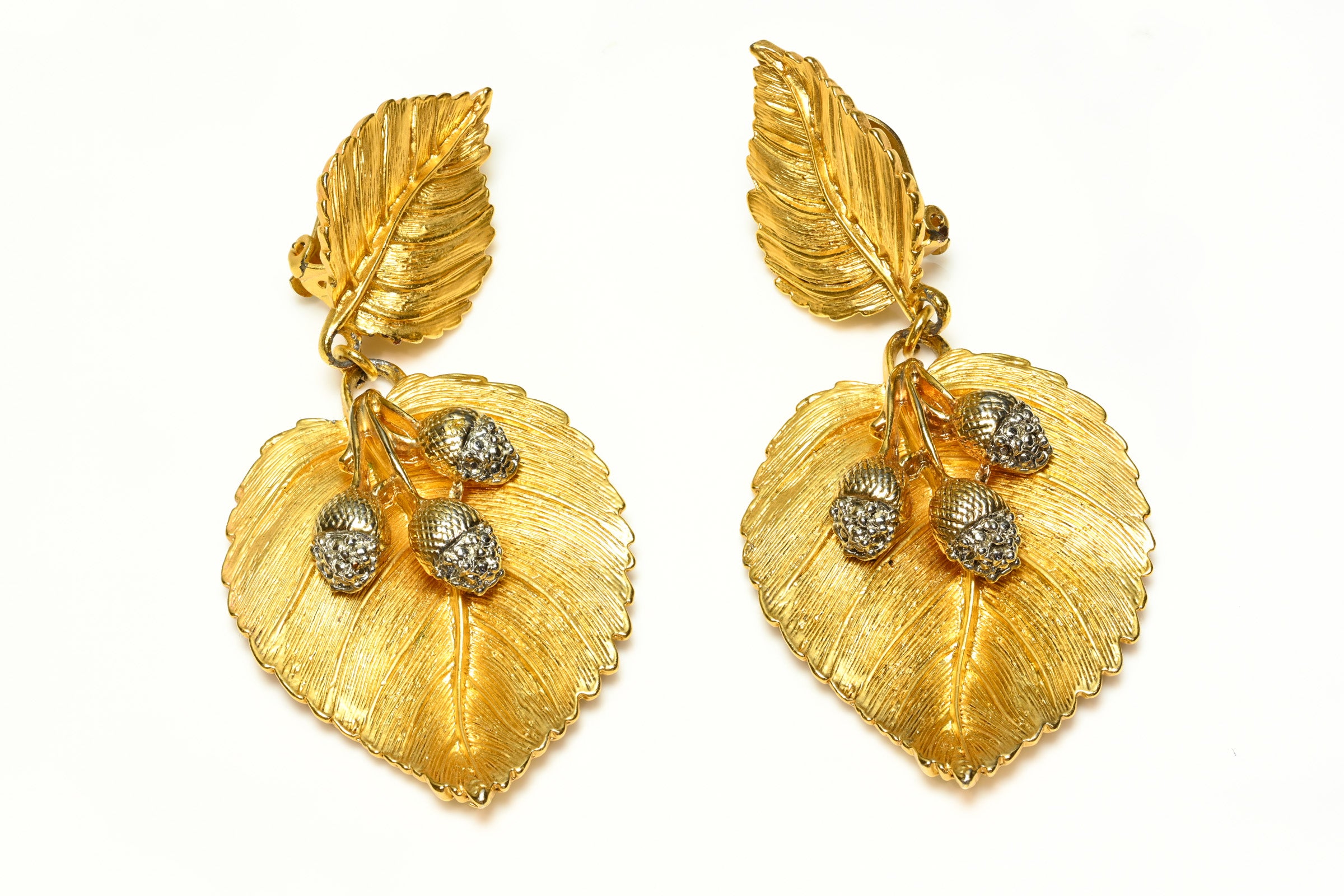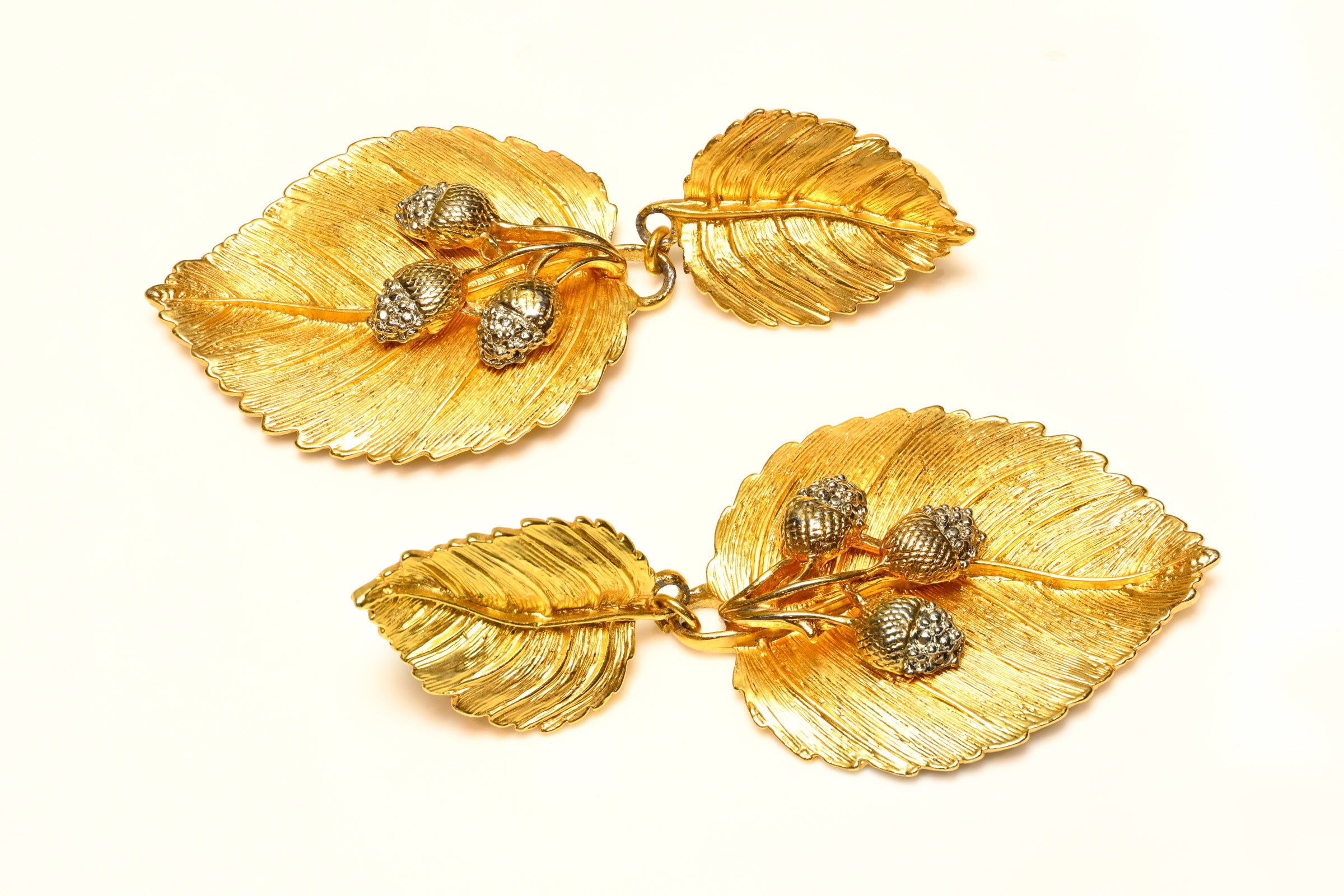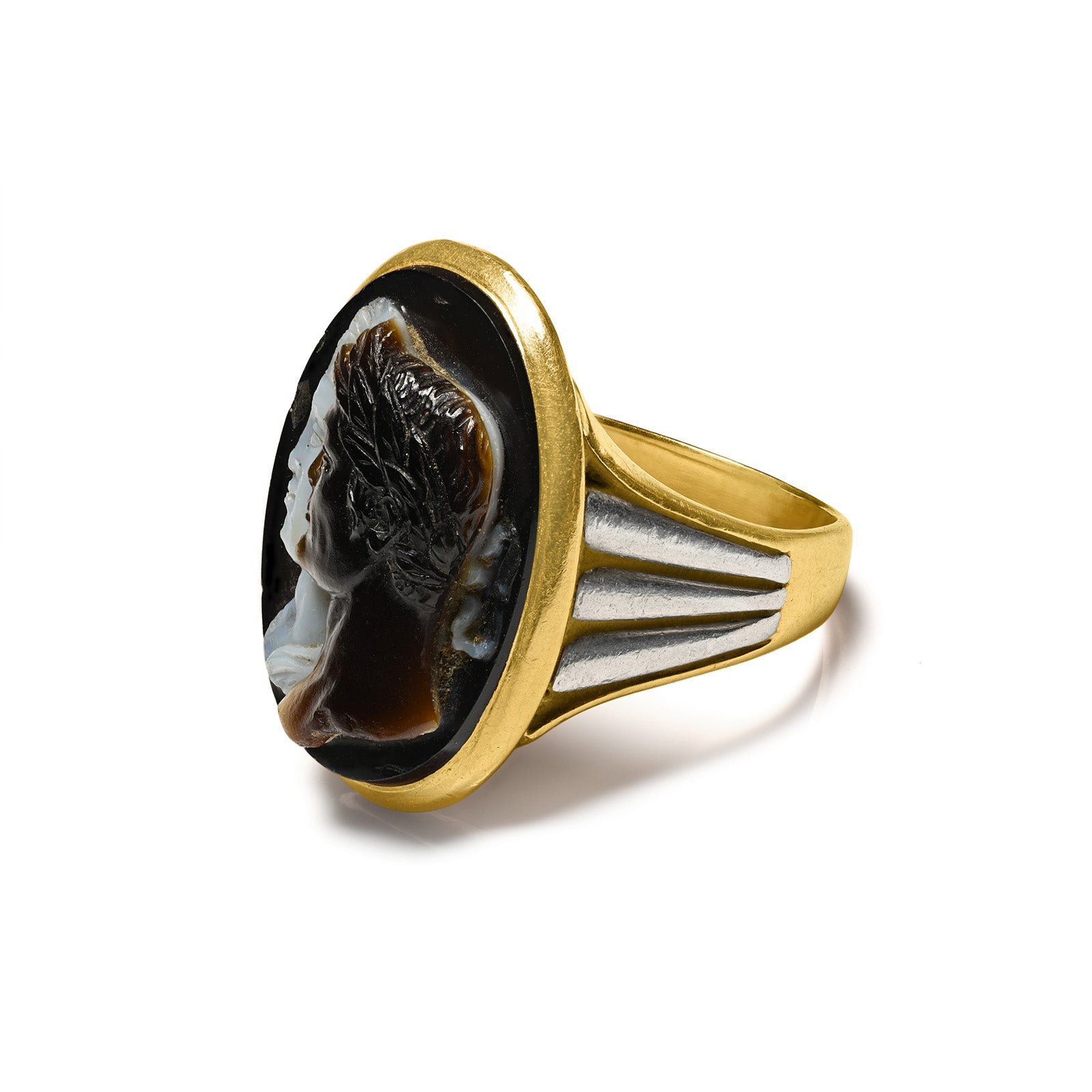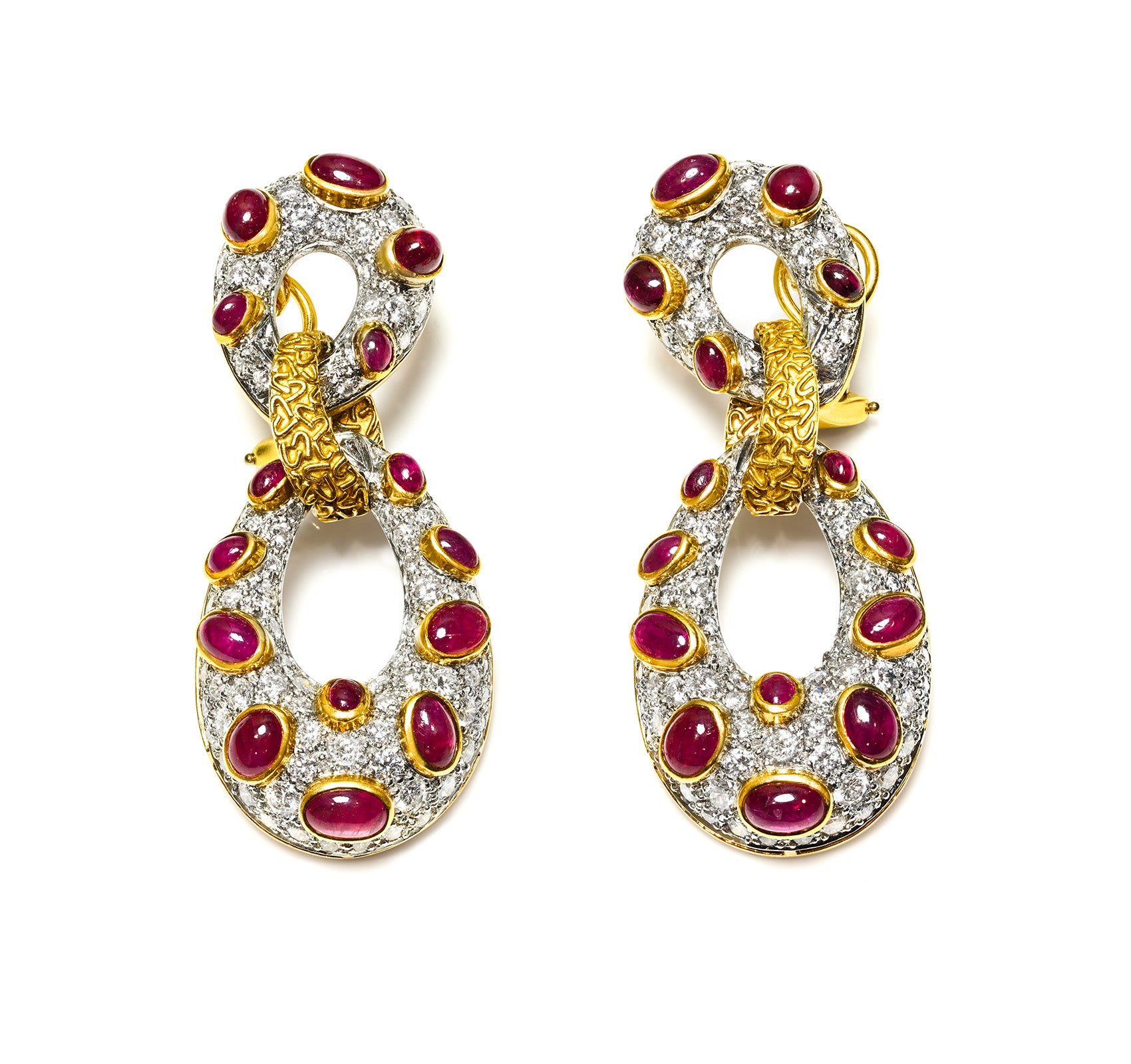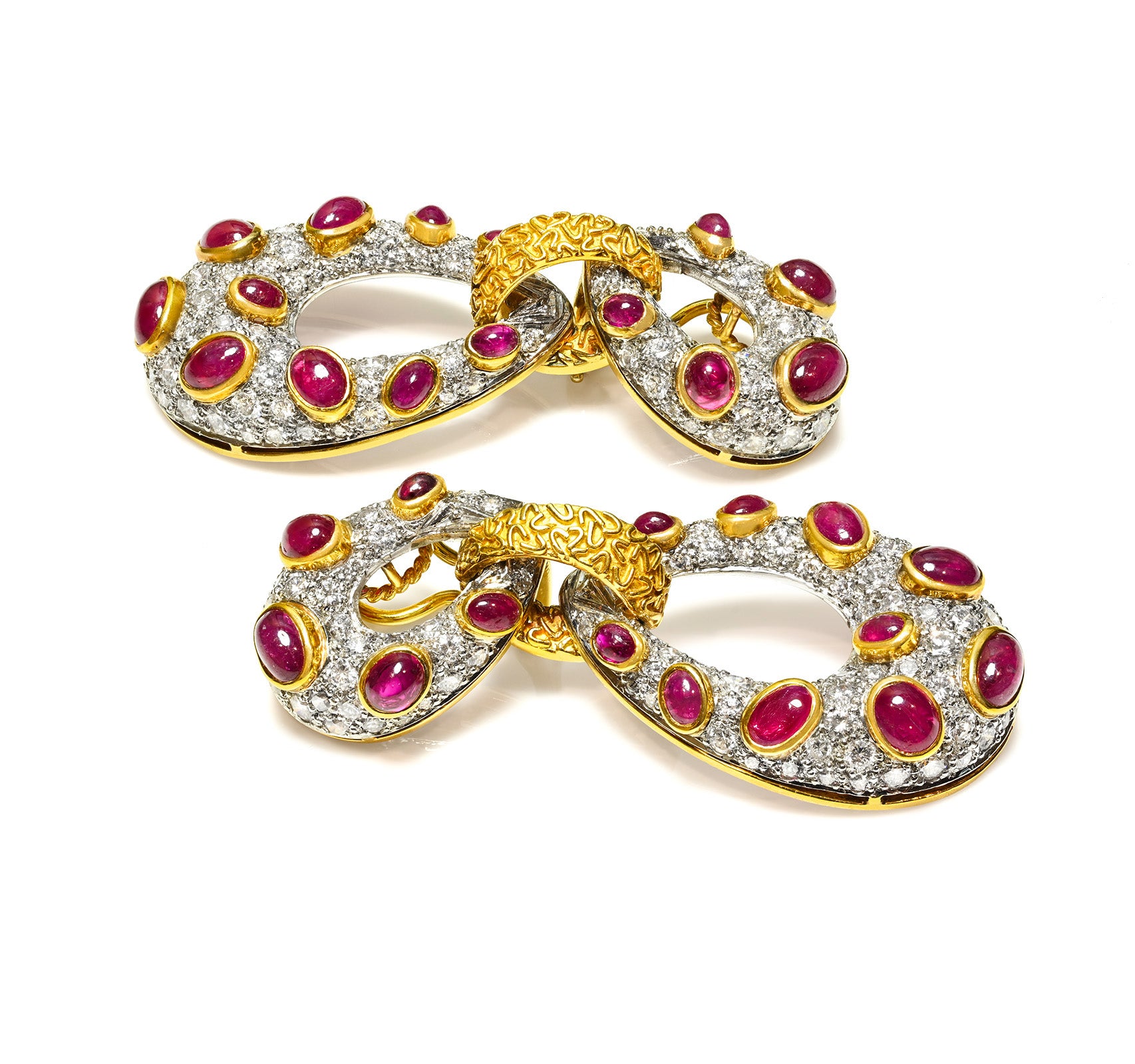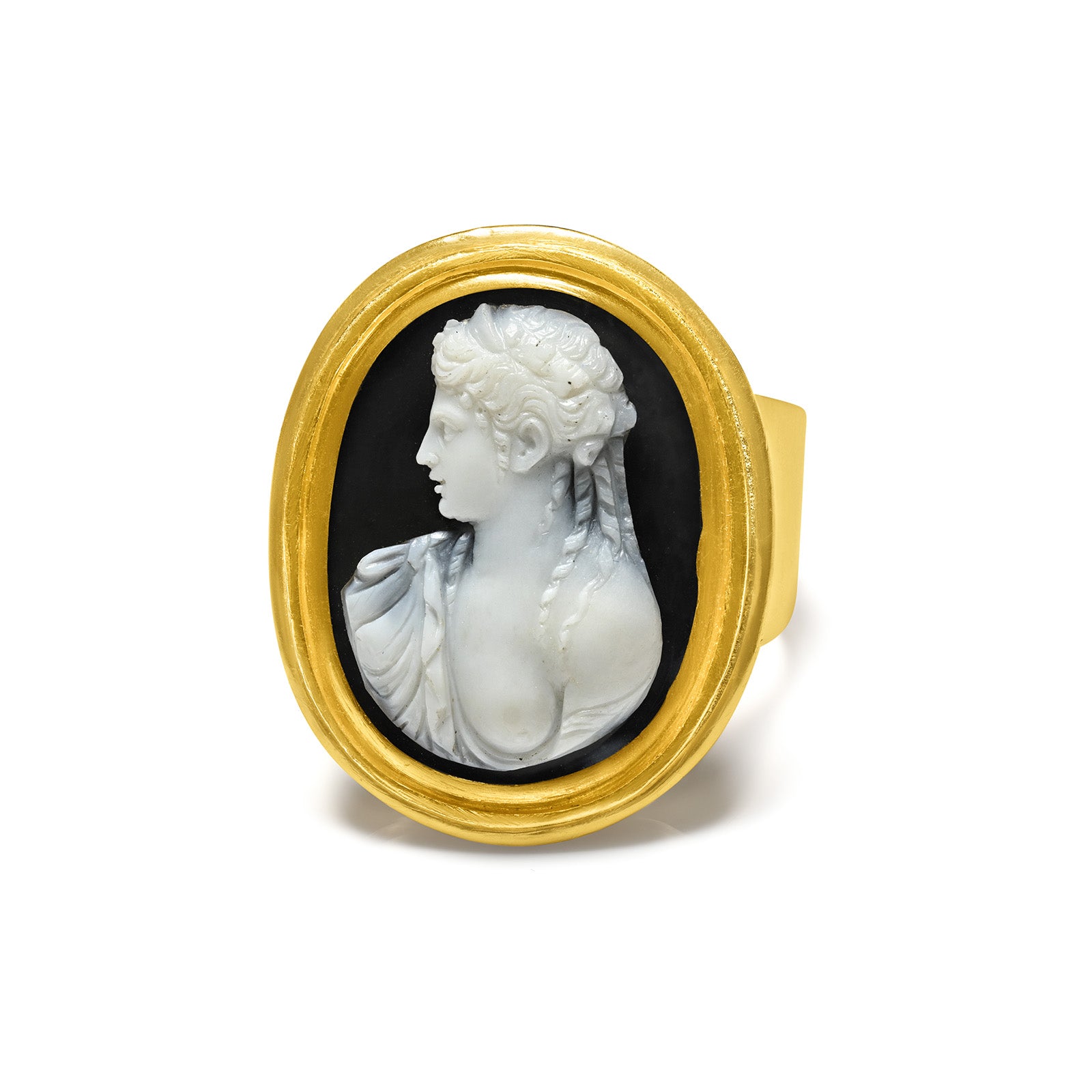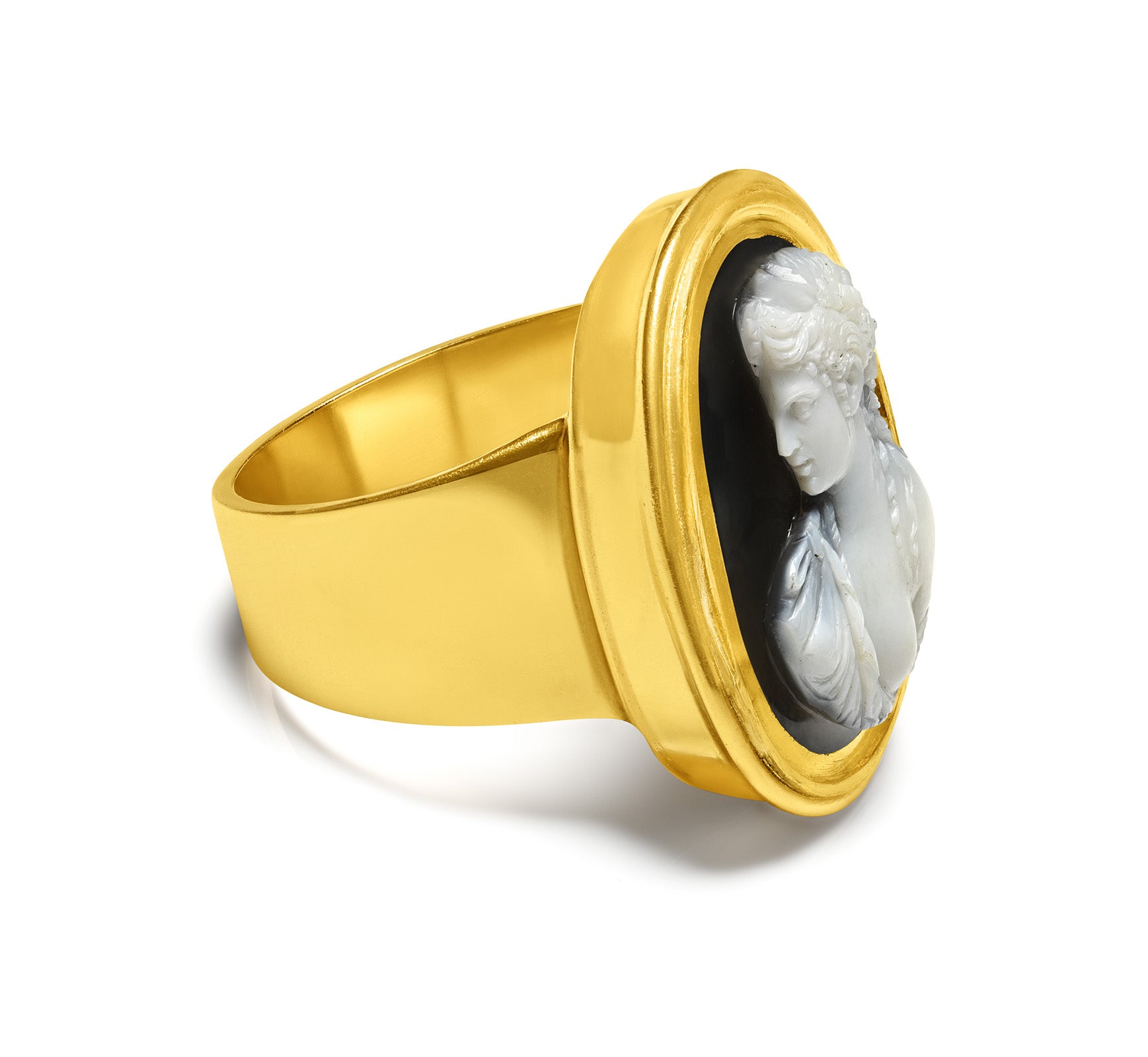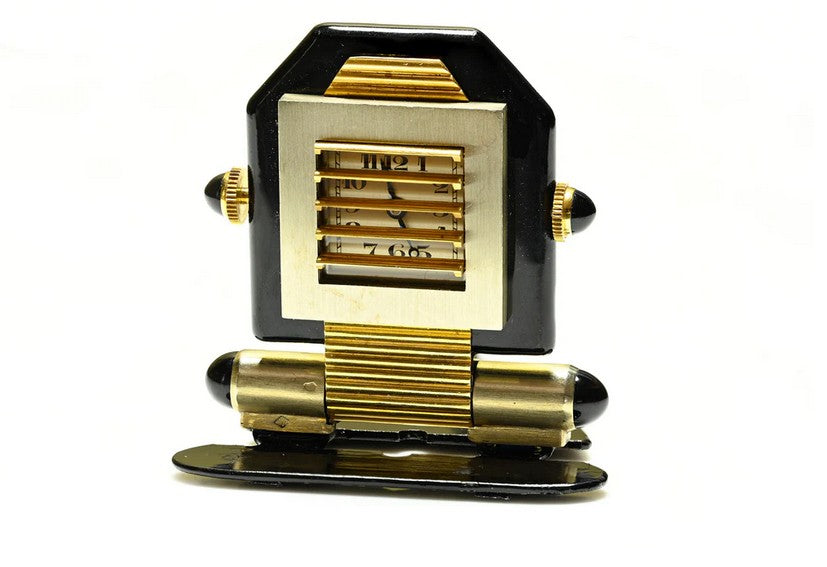
Verger Frères: The Art Deco Masterpiece Maker
Renowned as the "jeweller’s jeweller," Verger Frères created some of the most extraordinary jewels, clocks, and watches of the Art Deco era, blending unmatched craftsmanship with innovative design.
The Art Deco period, celebrated for its luxurious exoticism and inventive artistry, marked an epoch of design revolution. Bold geometric forms, vibrant color contrasts, and influences from global cultures defined this glamorous era.
In this golden age of jewelry and horology, the French house of Verger Frères emerged as a beacon of creative brilliance, crafting masterpieces that seamlessly married high jewelry with intricate watchmaking.
Despite their monumental contributions, Verger Frères remains lesser-known outside connoisseur circles—a hidden gem of the jewelry world, discreetly contributing to the success of iconic maisons.


Verger Frères Art Deco 18K Gold Louver Shutter Watch - DSF Antique Jewelry
Innovators in Jewelry and Timepieces
Verger Frères played a pioneering role in the creation of elegant women's luxury watches, collaborating with Vacheron Constantin for movements.
Alongside Cartier, they became one of only two manufacturers to produce the renowned Art Deco luxury clocks, celebrated for their precision and sophistication.
The house was also credited with inventing several groundbreaking designs, such as the interchangeable cabochon signet ring and the ingenious shutter watch. These innovations secured their place as technical and artistic leaders of the era.
In jewelry design, Verger Frères collaborated with an illustrious roster of external creators, including designer Paul-Frederic Follot, architect Eric Bagge, poster artist André Mourlot (widely known as Cassandre), sculptor Lambert Rucki, and jewelry designers Maurice Duvallet and Juliette Moutard.
Their collaborative approach brought fresh perspectives to their creations, resulting in designs that stood at the forefront of Art Deco aesthetics.
Pioneers of Mystery and Excellence
Verger Frères was one of only two Parisian houses entrusted to craft the legendary "Mystery Clocks," a hallmark of technical brilliance and aesthetic perfection.
Their partnerships with gemstone experts such as the Esmerian family—renowned for their expertise in cutting and sourcing precious stones—ensured their creations were of the finest quality.
Working closely with Rubel & Cie, the Esmerians supplied decorative and precious gems, elevating the house’s designs to unparalleled levels of luxury.
A Collaboration of Masters
The genius of Verger Frères extended beyond their own atelier, as they collaborated with some of the most distinguished artisans of the era.
These partnerships included engraver Edmond Becker, lacquer and mosaic artist Vladimir Makovsky, and miniaturist Fernand Paillet.
One of their most notable collaborations was with René Lalique, the legendary glassmaker and enameller, whose artistry added an ethereal quality to their creations. Such collaborations exemplified the house’s commitment to integrating diverse forms of artistic mastery into their jewelry and timepieces.
Verger Frères not only defined the Art Deco era but also set new standards in craftsmanship, design, and innovation. Their work continues to be celebrated as a testament to the ingenuity and artistry of the golden age of luxury.
Foundations of Excellence: Ferdinand Verger's Vision
The House of Verger distinguished itself as a pioneer in the Art Deco era, renowned for its exceptional craftsmanship and innovative designs.
Unlike many of its contemporaries, Verger Frères maintained an in-house production model that encompassed every stage of creation, from design to execution. This holistic approach allowed the brand to achieve unparalleled quality in both jewelry and horology.
The firm’s workshops were home to an extraordinary array of artisans—lapidaries, stone setters, goldsmiths, platinum- and silversmiths, enamellers, watchmakers, case makers, designers, and renderers—who collectively brought Ferdinand Verger’s vision to life.
At the heart of this legacy was Ferdinand Verger (1851–1928), a visionary craftsman whose career exemplified artistry and innovation. Beginning his apprenticeship at the remarkable age of 11, Verger honed his skills through years of dedication and an insatiable quest for mastery.
His early experiences in London and Paris equipped him with a global perspective that would later shape the Maison Verger into a powerhouse of creativity. By 1879, Ferdinand became the Parisian agent for the esteemed Swiss watchmaker Vacheron Constantin—a partnership that laid the groundwork for Verger’s future successes.
In 1896, he established his own brand, registering the trademark “FV” and setting a new standard in jewelry and timepiece design. Ferdinand’s contributions extended far beyond the confines of his workshop.
Known as the “apostle of horological art,” he was a unifying figure in the Parisian jewelry community and a bridge between Swiss and French watchmaking traditions. His leadership not only elevated the Maison Verger but also fostered a spirit of collaboration and innovation within the industry.
Ferdinand’s altruism and unwavering dedication to excellence earned him widespread admiration. Upon his passing, his obituary described him as “the nicest figure in the world of jewelry and watchmakers… armed with an irresistible smile.”
The Rise of Verger Frères
In 1911, Ferdinand Verger’s sons, Georges and Henri Verger, officially joined the family business, rebranding it as Verger Frères (“Verger Brothers”). This transition marked the beginning of the firm’s golden era, particularly during the Art Deco movement of the 1920s and 1930s.
Adopting the “VF” trademark, Georges and Henri steered the company to unparalleled success, building upon their father’s legacy of innovation and craftsmanship.
By 1921, Ferdinand had entrusted the business entirely to his sons, heralding a new chapter for the Maison. What set Verger Frères apart from their contemporaries was their vertically integrated production model.
Unlike many ateliers of the time, the firm created every component of their masterpieces in-house. Employing a diverse and highly skilled team of over 200 artisans, including goldsmiths, enamellers, engravers, lapidaries, diamond polishers, and watchmakers, Verger Frères ensured that every detail was meticulously executed.
This in-house approach allowed for complete creative control and consistency, resulting in some of the most exquisite jewelry and timepieces of the Art Deco period.
Under the leadership of Georges and Henri, the firm not only retained its commitment to traditional craftsmanship but also embraced innovation.
Georges Verger, in particular, played a pivotal role in designing the majority of the house’s creations. He also fostered collaborations with some of the most celebrated artists and designers of the early 20th century, including René Lalique and Vladimir Makovsky, elevating the Maison’s creations to new heights of artistic excellence.
The firm's dedication to originality and technical ingenuity was recognized through numerous patents for innovative techniques in jewelry and watchmaking. This spirit of innovation, combined with the artistry of their designs, cemented Verger Frères’ reputation as one of the premier names in fine jewelry and horology.
By the time Ferdinand's sons fully assumed control of the business, Verger Frères had become a hub of creativity and expertise. The firm’s meticulous craftsmanship, use of the finest materials, and groundbreaking designs made it a cornerstone of the Art Deco era and a name synonymous with luxury and elegance.
Known as the ‘jeweller’s jeweller,’ Verger Frères crafted extraordinary designs that seamlessly merged innovation with sophistication, earning the admiration of the world's most prestigious jewelry houses.
Unlike many ateliers of their time, which typically worked from client-provided sketches, Verger Frères pioneered the practice of supplying original designs to iconic firms such as Cartier, Boucheron, Van Cleef & Arpels, Chaumet, Tiffany & Co., Trabert & Hoeffer, Black, Starr & Frost, Bulgari, and Lacloche Frères.
This distinctive approach positioned Verger as a creative powerhouse of the Art Deco era.
Paris in the 1920s: A Cultural Renaissance
The 1920s marked Paris as a global epicenter of art and intellectual exchange. Amid the city’s vibrant cultural renaissance—where figures like Picasso, Matisse, and Gertrude Stein flourished—Verger Frères emerged as a beacon of creative excellence.
Their jewelry and timepieces captivated the attention of prominent personalities, from celebrated actresses like Mary Pickford and Arletty to performers such as Mistinguett.
The maison’s ability to balance avant-garde aesthetics with timeless craftsmanship made it a favorite among the elite. Hollywood Glamour Meets French Craftsmanship In Hollywood’s golden age, Verger Frères found a new stage for their creations.
The maison’s dazzling designs adorned some of cinema's earliest stars, including Joan Crawford, Katharine Hepburn, Greta Garbo, Marlene Dietrich, and Gloria Swanson. These jewels became synonymous with the allure of early Hollywood, enhancing the glamour of icons both on and off the screen.
The maison’s pieces were frequently sought after by film industry jewelers like Trabert & Hoeffer and Laykin, solidifying their place in the world of cinema.
Expanding Across the Atlantic In 1924, Verger Frères took a monumental step by participating in a landmark exhibition at New York's Grand Central Palace. This event marked the first time Parisian jewelers like Verger Frères, Cartier, and Mauboussin were showcased alongside renowned couturiers such as Lanvin and Worth.
The exhibition not only introduced American audiences to French luxury but also opened doors for Verger Frères to establish a significant presence in the U.S. market.
Their exquisite creations became highlights in prestigious retailers like Neiman Marcus and J.E. Caldwell and adorned the windows of luxury jewelers in cities like Philadelphia, Palm Beach, and Chicago.
This transatlantic expansion further cemented Verger Frères as a leading name in haute joaillerie, blending Parisian sophistication with American glamour.
The Evolution of Style and Legacy
Throughout the 1940s and 1950s, the Verger family continued to steer the firm, producing Retro-style pieces that embraced bold designs and gem-set yellow gold.
Reflecting the trends of the era, these jewels retained the maison’s signature commitment to craftsmanship and innovation.
Eventually, the business transitioned under new ownership, first to Georges Lenfant and later to Atelier Bouder, ensuring the preservation of Verger Frères’ heritage and design legacy.
Rediscovering Verger Frères Today
Though many of their masterpieces were marketed under renowned retailer names like Cartier and Mauboussin, the distinct craftsmanship of Verger Frères often unveils itself to discerning collectors and connoisseurs.
The discreet “VF” hallmark serves as a hidden signature, revealing the origins of these Art Deco treasures. Today, Verger Frères’ legacy endures, celebrated as a cornerstone of Art Deco design and a timeless symbol of innovation and luxury.
Pioneers of Art Deco
Design The brilliance of Verger Frères lay in their masterful ability to capture the essence of the Art Deco movement while simultaneously expanding its stylistic horizons.
Their creations were not confined to a single aesthetic but instead celebrated the diverse influences that defined the era, including geometric minimalism, Chinoiserie, Egyptian Revival, and the colorful "tutti frutti" designs inspired by Indian art.
What set Verger Frères apart was their unparalleled attention to detail. Every gemstone was meticulously selected and cut, ensuring it perfectly complemented the design's composition.
Their innovative use of materials—platinum, onyx, jade, coral, and more—brought their creations to life, blending boldness with refinement. Each piece embodied a balance between architectural precision and artistic expression, making Verger Frères a true pioneer of Art Deco's daring elegance.
Iconic Creations
Verger Frères distinguished themselves as unparalleled innovators in the realm of jeweled timepieces, seamlessly blending functionality with artistic sophistication.
Their creations—whether lapel watches, wristwatches, or table clocks—pushed the boundaries of design, transforming everyday objects into breathtaking masterpieces.
One of Verger Frères’ most fascinating design philosophies was their playful approach to concealing the dial, the very essence of a watch. This ingenuity was particularly evident in their creation of purse or "flap" watches (montres à volets), which combined portability with elegance.
These watches, often doubling as desk accessories, were practical yet whimsical, exemplifying their knack for merging form and function.
In 1928, Verger patented the revolutionary "Opening Case for Watches or Other Items" (FR 656,483). This groundbreaking mechanism enabled the watch dial to remain hidden until activated.
By pressing the outer edges—often crafted in white gold or embellished with precious stones—the flaps opened to reveal the dial in a dramatic and theatrical flourish.
These "surprise watches" perfectly embodied Verger’s mastery of technical innovation paired with playful elegance.
Lapel Watches
Among Verger Frères’ most celebrated timepieces, lapel watches captivated collectors and connoisseurs with their bold, creative designs.
One standout featured coral flowers, onyx leaves, and diamonds, a quintessentially Art Deco piece highlighting the movement’s love for vibrant contrasts.
Another remarkable example was an asymmetrical jabot pin watch adorned with jade, onyx, natural pearls, and sapphires—an inventive combination of jewelry and timekeeping.
Mystery Clocks
In collaboration with Cartier, Verger Frères produced the iconic Mystery Clocks, marvels of Art Deco ingenuity.
These clocks featured hands that appeared to float, moving without any visible mechanism—an engineering marvel that fascinated observers.
Adorned with exotic stones and intricate designs, these clocks were more than functional; they were dazzling works of art.
Table Clocks
Verger Frères also excelled in the creation of table clocks, transforming them into elaborate decorative pieces. One example showcased a Greek sphinx amidst ruins, masterfully inlaid with mother-of-pearl and abalone shell.
Another exceptional piece was a Chinoiserie-style clock, featuring coral carvings, jade spheres, and diamond accents. These designs encapsulated the exotic and luxurious spirit of the Art Deco era.
The Tube Watch
A testament to their technical expertise, Verger Frères introduced the "tube" watch in the 1920s, leveraging a groundbreaking movement designed by Georges Grandjean at Vacheron Constantin. This ultrathin "baguette" watch for women quickly became a hallmark of modern style.
As described by Franco Cologni, these watches achieved "tremendous success," highlighting Verger’s ability to marry cutting-edge technology with aesthetic finesse. From their flap watches to their collaborative masterpieces like the Mystery Clocks, Verger Frères epitomized the artistry and innovation of the Art Deco period.
Each creation not only reflected the maison's unparalleled craftsmanship but also captured the daring, glamorous spirit of the era.
Collaborations with Iconic Maisons
Verger Frères distinguished themselves not only as master jewelers and watchmakers but also as collaborative innovators, working with nearly every major jewelry house of their time.
Their illustrious client list included renowned names like Cartier, Van Cleef & Arpels, Boucheron, Hermès, and others. Verger’s creations seamlessly blended their own signature artistry with the unique visions of these maisons, resulting in some of the most iconic jewelry and timepieces of the Art Deco era.
One of their most notable collaborations was with Vacheron Constantin, for whom Verger crafted exquisite watch cases that housed the Geneva watchmaker’s precision movements.
These cases were also supplied to other maisons, creating an intricate network of partnerships that highlighted Verger’s role as a behind-the-scenes innovator in haute horology.
Such collaborations allowed Verger’s pioneering designs to reach a global audience, solidifying their reputation as the quiet genius behind many celebrated creations. Verger Frères’ work was prominently displayed at exhibitions, including the landmark 1925 Exposition Internationale des Arts Décoratifs in Paris.
At this event, their creations epitomized the glamour, sophistication, and ingenuity of the Art Deco movement, drawing admiration from collectors and connoisseurs worldwide.
Defining Characteristics of Verger Frères
To own a creation by Verger Frères is to possess a tangible piece of history—an object that encapsulates the grandeur, creativity, and technical mastery of an extraordinary era.
As Ralph Esmerian, a leading authority on the firm, aptly put it: “In terms of their creativity and production, [Verger Frères is] right at the top of the French manufacturers, including the great retail names.”
The defining elements of Verger Frères’ masterpieces include:
- Innovative Mechanisms: Verger introduced ingenious features like shutter watches, surprise boxes, and concealed compartments, delighting collectors with their playful and functional designs.
- Vivid Use of Color: Their pieces often featured bold color contrasts, such as the striking combination of blue and black enamel with coral or the vibrant tutti frutti style using carved emeralds, rubies, and sapphires.
- Exotic Influences: Reflecting the cosmopolitan spirit of the 1920s, Verger’s designs drew inspiration from a rich tapestry of cultures, incorporating elements from Chinese, Japanese, Indian, and Egyptian art into their creations.
- Unparalleled Craftsmanship: Every detail, from the intricate enamel work to the precision gem setting, was executed with meticulous attention to quality.
This commitment to craftsmanship ensured that each piece became a timeless treasure. Through their exceptional designs and collaborative spirit, Verger Frères did not merely follow the trends of the Art Deco era—they defined them.
Their creations continue to captivate collectors, celebrated not only for their beauty but also for the ingenuity and artistry that set them apart.
The Enduring Legacy of Verger Frères
Though Verger Frères ceased operations in 1979, their legacy continues to shine brightly in the world of fine jewelry and horology. Their creations, marked with the distinctive “VF” hallmark, are highly prized by collectors and connoisseurs, frequently appearing in prestigious auctions and commanding premium prices.
These masterpieces are celebrated not only as pinnacles of Art Deco design but also as enduring symbols of the Verger family's ingenuity and artistry. Beyond their tangible works, the influence of Verger Frères is woven into the broader narrative of jewelry and timepiece design.
By fearlessly blending traditional craftsmanship with groundbreaking innovation, they elevated the decorative arts to new heights, inspiring future generations of designers to think beyond conventional boundaries. Their creative approach set the stage for modern artisans to merge functionality with artistic expression in ways that continue to evolve today.
The house of Verger Frères remains a timeless icon of the Art Deco era, celebrated for their ability to harmonize beauty, utility, and bold design. Their mastery of diverse styles, from exotic cultural motifs to avant-garde geometric patterns, places them among the most important contributors to the decorative arts of their time.
The next time you admire a finely crafted Art Deco jewel or timepiece, take a moment to look closer. You might just uncover the brilliance of Verger Frères—the unsung visionaries whose work continues to captivate the world with its luxurious elegance and innovative spirit.

